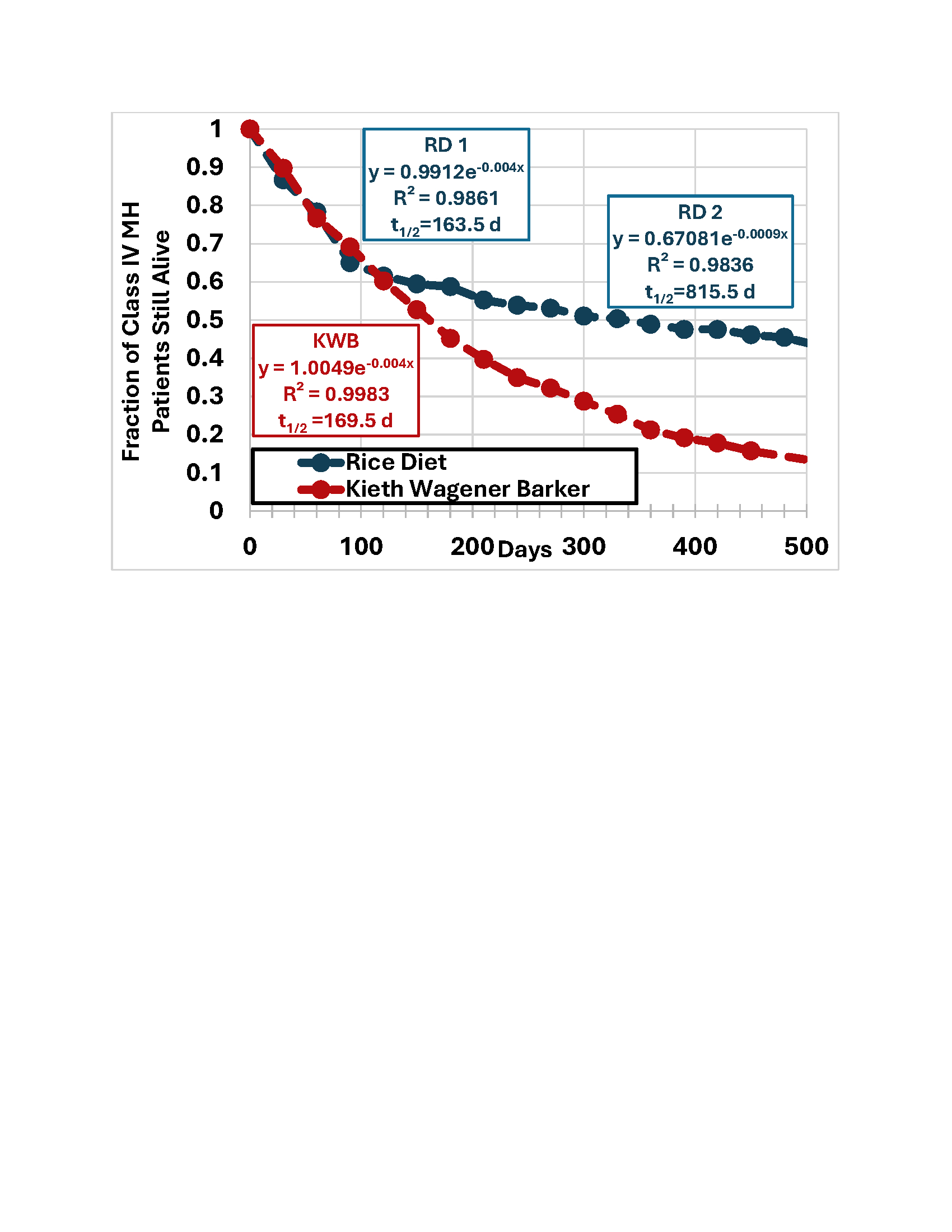Final ID: P-387
Survival trajectories of the patients with malignant hypertension in the Rice Diet Program
Abstract Body: Malignant hypertension (MH), severe arterial hypertension accompanied by retinal hemorrhage (Class III), papilledema (Class IV), or both was untreatable in 1942. Walter Kempner treated MH patients with a very low sodium (~200 mg/day), protein (~5% of calories), and fat (~5% of calories) diet with success in some patients. The scope and efficacy of this “Rice” Diet (RD) was not clear. We analyzed data from 563 non-diabetic MH patients treated from 1942-1988. The cohort, mostly male (69.4%) with a median age 51 years and median BMI 24.01 provided several interesting findings. First, the number of MH patients increased until the early 1950s, but then declined sharply by 1955, before effective pharmacotherapy was available. This sudden MH “disappearance” seems real, but is unexplained by therapy or other known events. Second, 341 MH patients showed that median survival more that doubled with RD treatment compared to untreated MH patients described by Keith-Wagner-Barker (KWB) in 1939. Third, the RD-diet survival benefit began after ~90-100 days into treatment. During the first ~90-100 RD days, survival closely tracks that of untreated MH patients described by KWB; thereafter, survival curves diverged substantially (e.g., calculated half-time survival for Class IV increased from 163.5 to 815.5 days, Figure). Fourth, serial retinal photographs of 359 MH patients, showed that of 343 with initial hemorrhage, 36 of 177 patients surviving at 1 year (20%) still had hemorrhage; of 146 with initial papilledema, only 1 of 76 patients surviving at 1 year (1%) still had papilledema. Fifth, survival curves of MH patients with only hemorrhage or only papilledema were similar; however, survival was markedly shorter in those with both hemorrhage and papilledema, implying that the deleterious effects of vascular and neuropathic changes are independent of one another and additive. Remaining questions concern: why did MH “suddenly” disappear; how does RD impact vaculopathy; what factors impact survival trajectories.
More abstracts on this topic:
Association of Blood Pressure Time in Target Range with Outcomes Among NIH "All of Us” Cohort
Agarwal Neel, St John Julie, Xlaffinx Xlukex
Association of Hemoglobin and Partial Pressure of Oxygen in Arterial Blood on Survival and Neurologic Outcomes in In-Hospital Cardiac Arrest PatientsKoul Rudra, Gupta Vasu, Qadeer Nasheeta, Patel Jignesh

